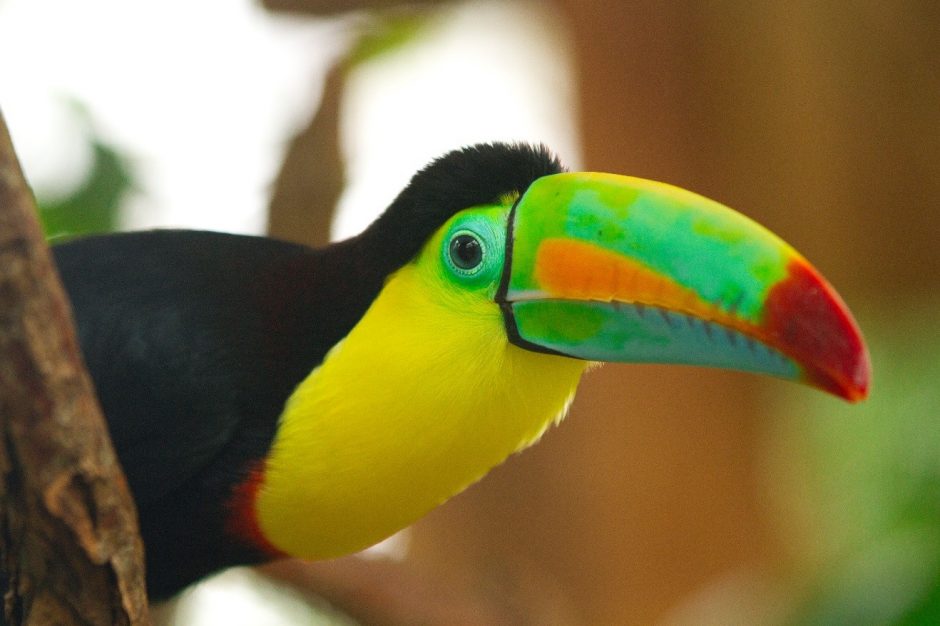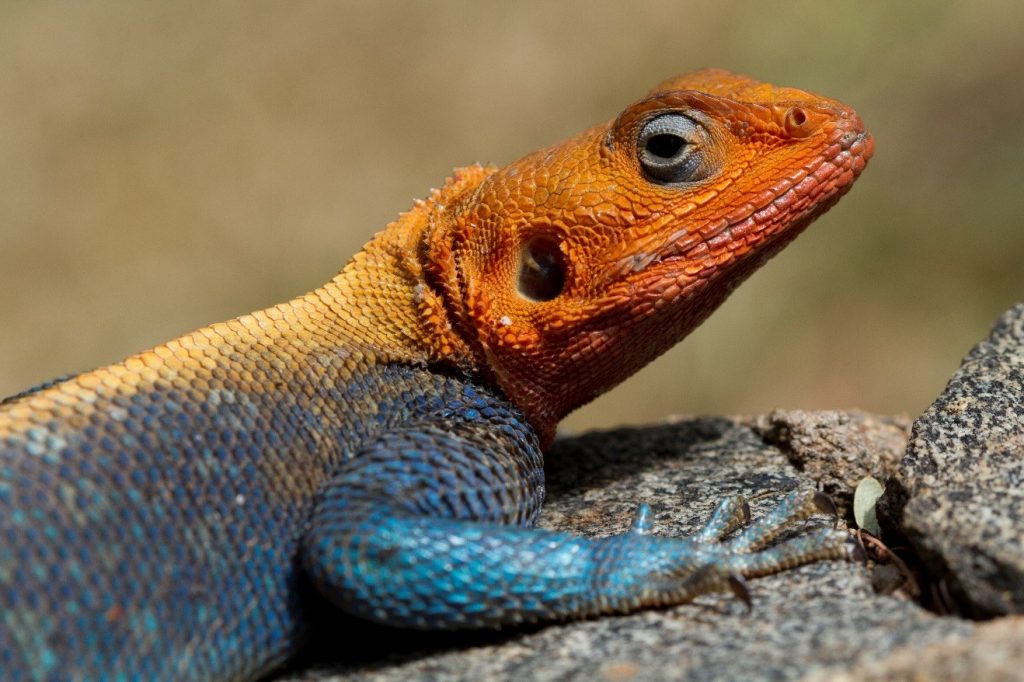
Where Should You Focus when taking Wildlife Photographs?
Wildlife photography has many challenges, most of them associated with being in the right place at the right time. So, let’s say you’re with a great outfitter with exceptional guides, and right in front of the wildlife you were dreaming of seeing. You have your camera…you have the right lens on…and the animal is close and patient – what a perfect situation!
When animals are close and patient, you have the luxury of trying many different shots, but usually a shot that “fills the frame” of the camera is most desirable. This allows you and the viewer to really connect with the animal, and capture its subtle nuances, whether it’s the feathers of a toucan in Costa Rica or the scales an agama lizard in Kenya.

But when you are presented with such a close up view, you then need to figure out which part of the animal you should focus on. Nine times out of 10, I recommend you focus on the eye, even if that means other parts of the animal will be out of focus.
Take the above examples…there are actually many parts of these animals in these two photos that are out of focus. For the lizard, its entire arm and hand, as well as part of its body is entirely out of focus. For the toucan, perhaps the most iconic part of the bird – its colorful bill – is out of focus. But, I bet you didn’t think about this when you first looked at the shot! That’s because the eye is by far the most important part to have in focus. Again, this applies to at least 90% of my photos, and I rarely sway from that rule. If you need to get more of the animal in focus, it should be accomplished by a larger depth of field (ie, bigger f/stop number), not a change in primary focus point. Read more here on the strategies of adjusting your depth of field – Apertures & F-Stops.

As one final example, take a look at the above butterfly. Even though only the head and eyes are really in focus, with the wings largely out of focus, it’s a good shot of a butterfly. Normally you’d think that the colorful patterned wings are the critical part to show off, right? Well, this just goes to show you that even those are secondary to making sure the eyes are in focus of a full-frame animal shot.
Keep in mind that all rules are meant to be broken, so while I take 90% of my animal shots with the eyes as my key focal point, that still means there are exceptions. As long as you can justify why you did not choose the eyes as your focal point, please don’t feel that this rule must apply to every shot you take in perpetuity going forward. But, I do find that this one simple rule has paid dividends many times over with my wildlife shots. I hope it does the same for you!
Go forward and give it a shot,
Court
2 Comments

Alan Wilkinson
June 10, 2022 at 7:24 am

Court Whelan, Ph.D.
June 16, 2022 at 2:00 pm
Hi Court
I have an oblique question about sometimes photographing animal figurines from only one side. I wonder if you feel the animal model facing in a rightward stance is better. We English read from left to right, and left to right signifies directional movement in progress to us. Your toucan, lizard and butterfly images each happen to be that way. In static photography, direction of facing is more often a choice. My pref is left to right.
I thank you for the quality and guidance your site presents. I’ll forward a link to my daughter, who frequently takes images of ponies, donkeys and other animals in the New Forest near her home.
thanks, Alan! I think you have a good point of orientation, in how it could be based on how we read left to right…or even right vs. left-handedness. I think we most wildlife photography we don’t really have the luxury of choosing, so the only thing I really concentrate on is leaving space in the direction the animal is facing/moving. That is, if I offset the animal subject on the left side, there should be more space on the right side (rule of thirds). Similarly, if the animal is on the right side facing left, I leave more space on the left side. However, this is an interesting observation and I’ll start really paying attention to it in those cases where I can indeed choose the direction!